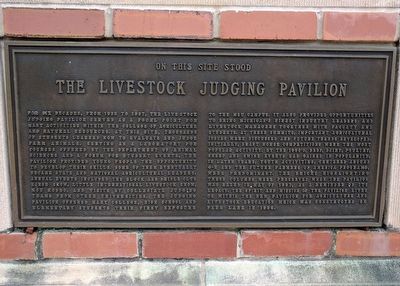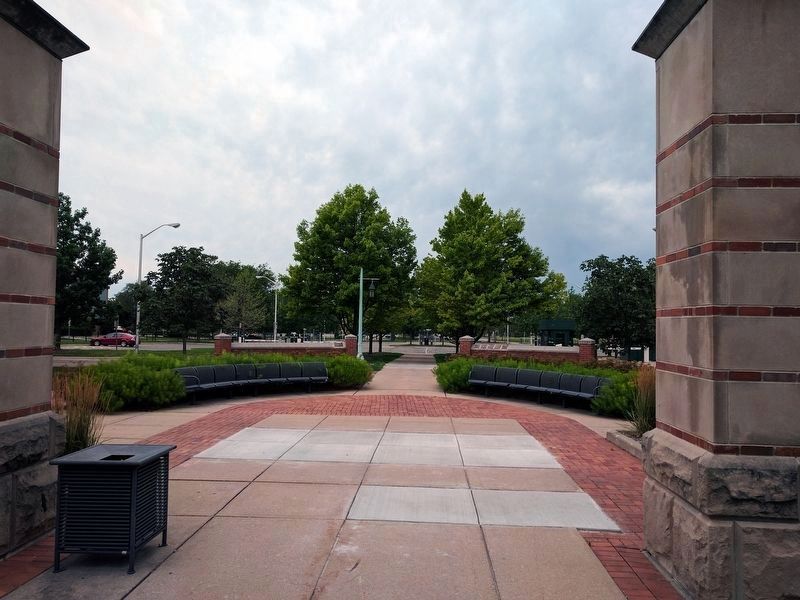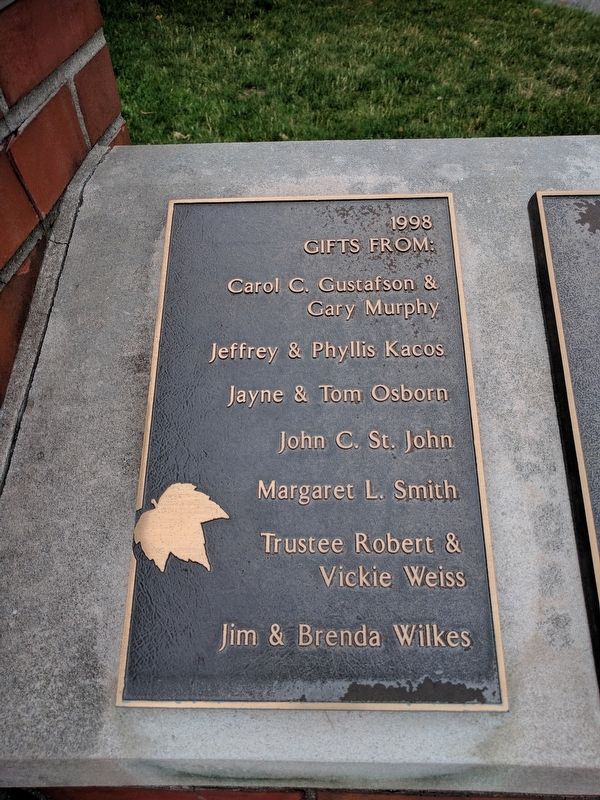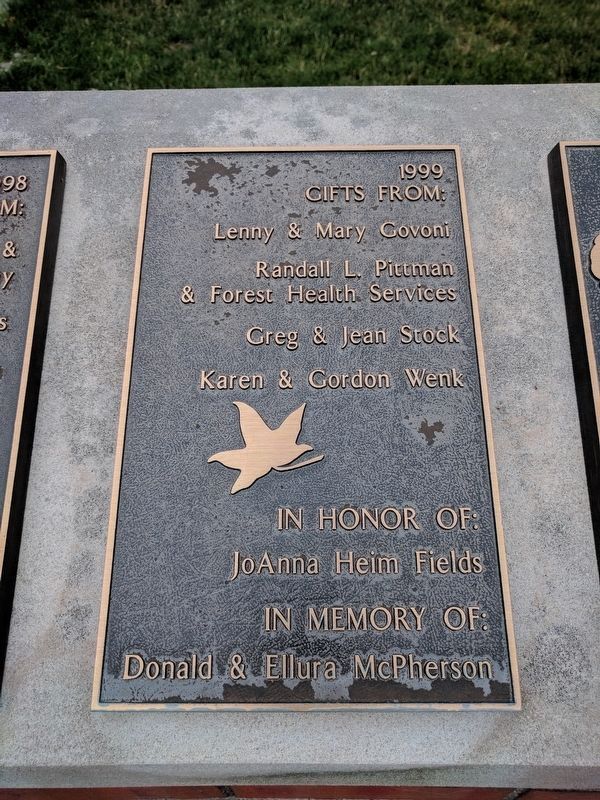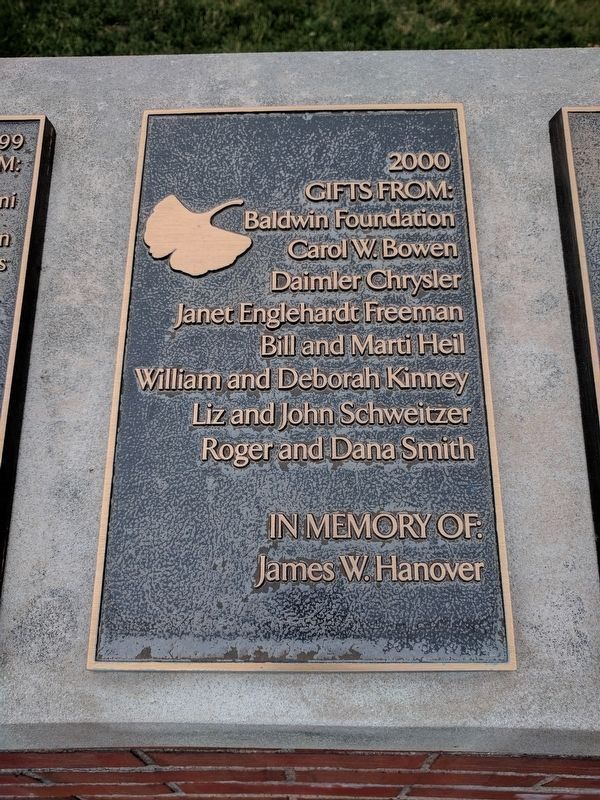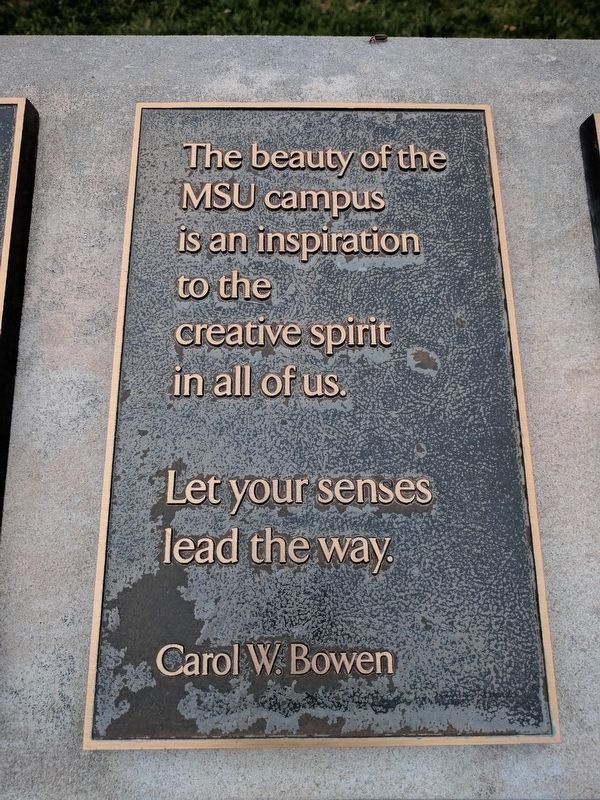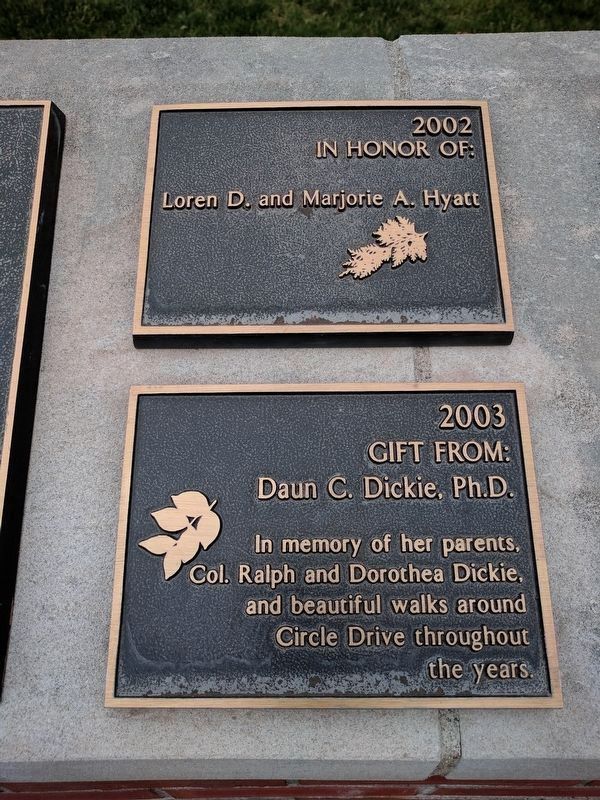East Lansing in Ingham County, Michigan — The American Midwest (Great Lakes)
The Livestock Judging Pavilion
The Livestock Judging Pavilion
For six decades, from 1938 to 1997, the Livestock Judging Pavilion served as a focal point for many activities within the College of Agriculture and Natural Resources. At this site, thousands of students learned how to evaluate and judge farm animals. Serving as a laboratory for courses offered by the Department of Animal Sciences and a forum for student events, the pavilion provided young people the opportunity to develop their skills. Some of them eventually became state and national agricultural leaders. Annual events included the Block and Bridle Club Horse Show, Little International Livestock Show, MSU Rodeo, and visits by collegiate judging teams from other universities. The Judging Pavilion offered many college, high school and elementary students their first exposure to the MSU campus. It also provided opportunities to bring Michigan's finest industry leaders and livestock managers together with faculty and students. At these summits, important agricultural issues were discussed and future trends developed. Initially, draft horse competitions were the most popular activity. By the 1950's, beef, dairy, poultry, sheep and swine events had gained in popularity. In later years, youth activities, centered around 4-H and the Future Farmers of America programs, were predominant. The bricks highlighting these columns were preserved when the pavilion was razed in May of 1997, as a reminder of its legacy. The spirit and mission of the pavilion lives on within the new Pavilion for Agriculture and Livestock Education which was constructed on Farm Lane in 1996.
Topics. This historical marker is listed in these topic lists: Agriculture • Animals • Education. A significant historical month for this entry is May 1997.
Location. 42° 43.543′ N, 84° 28.797′ W. Marker is in East Lansing, Michigan, in Ingham County. Marker can be reached from North Shaw Lane, 0.1 miles west of Farm Lane. Marker is between North Shaw Lane and South Shaw Lane on the fifth pylon from North Shaw Lane. Touch for map. Marker is in this post office area: East Lansing MI 48824, United States of America. Touch for directions.
Other nearby markers. At least 8 other markers are within walking distance of this marker. Judging Pavilion Site (within shouting distance of this marker); Dora Hall Stockman (approx. 0.4 miles away); Justin S. Morrill Hall of Agriculture (approx. 0.4 miles away); Saints' Rest / Saints' Rest Excavation (approx. 0.4 miles away); Michigan State University (approx. half a mile away); The Rededication of the Beaumont Tower Bells (approx. half a mile away); W.J. Beal Botanical Garden (approx. half a mile away); Sleepy Hollow (approx. half a mile away). Touch for a list and map of all markers in East Lansing.
Also see . . . Gone But Not Forgotten: Campus Buildings That No Longer Exist. Article on the Michigan State University University Archives & Historical Collections website that includes more information about the Livestock Judging Pavilion. (Submitted on May 15, 2019, by Joel Seewald of Madison Heights, Michigan.)
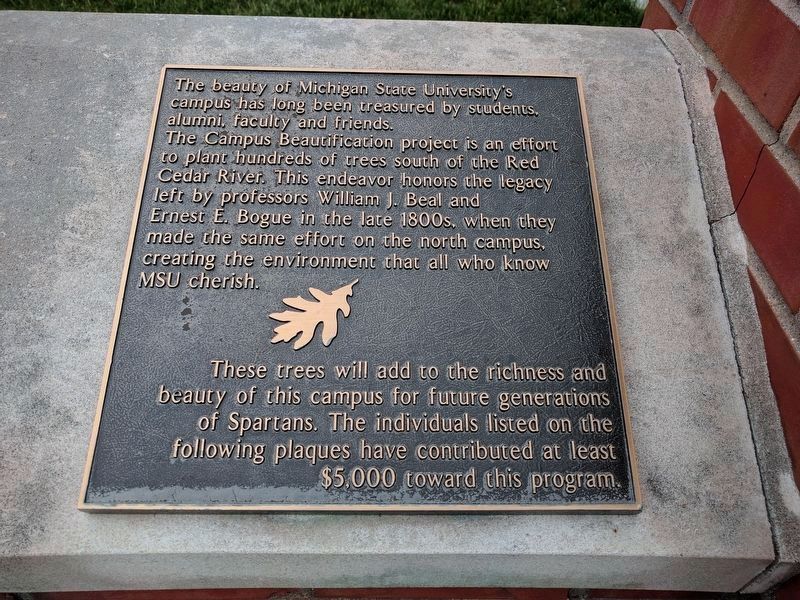
Photographed By Joel Seewald, July 20, 2017
4. Plaque on right masonry fence
The beauty of Michigan State University's campus has long been treasured by students, alumni, faculty and friends.
The Campus Beautification project is an effort to plant hundreds of trees south of the Red Cedar River. This endeavor honors the legacy left by professors William J. Beal and Ernest E. Bogue in the late 1800s, when they made the same effort on the north campus, creating the environment that all who know MSU cherish.
These trees will add to the richness and beauty of this campus for future generations of Spartans. The individuals listed on the following plaques have contributed at least $5,000 toward this program.
The Campus Beautification project is an effort to plant hundreds of trees south of the Red Cedar River. This endeavor honors the legacy left by professors William J. Beal and Ernest E. Bogue in the late 1800s, when they made the same effort on the north campus, creating the environment that all who know MSU cherish.
These trees will add to the richness and beauty of this campus for future generations of Spartans. The individuals listed on the following plaques have contributed at least $5,000 toward this program.
Credits. This page was last revised on December 7, 2020. It was originally submitted on May 15, 2019, by Joel Seewald of Madison Heights, Michigan. This page has been viewed 163 times since then and 13 times this year. Photos: 1, 2, 3, 4, 5, 6, 7, 8, 9. submitted on May 15, 2019, by Joel Seewald of Madison Heights, Michigan.
